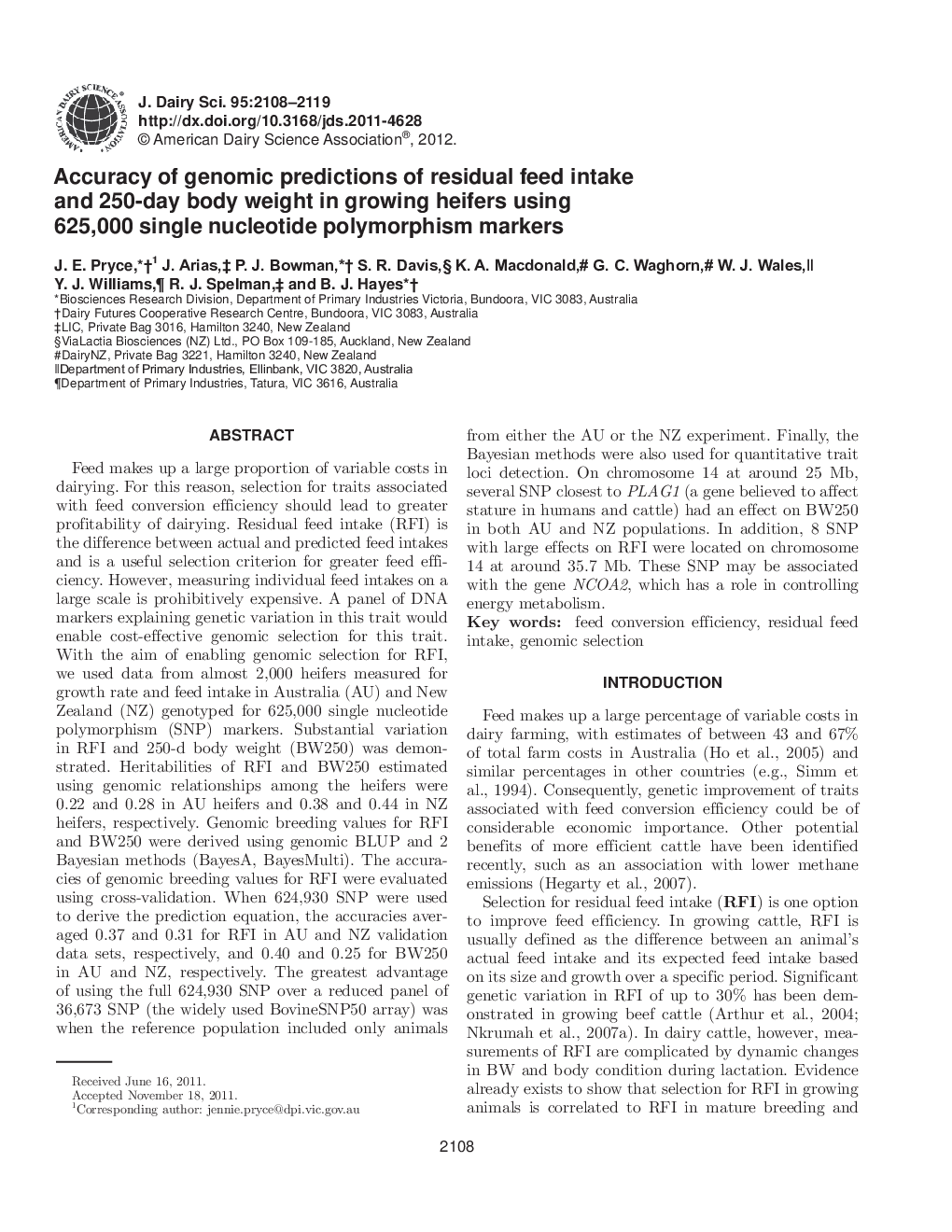| Article ID | Journal | Published Year | Pages | File Type |
|---|---|---|---|---|
| 10981089 | Journal of Dairy Science | 2012 | 12 Pages |
Abstract
Feed makes up a large proportion of variable costs in dairying. For this reason, selection for traits associated with feed conversion efficiency should lead to greater profitability of dairying. Residual feed intake (RFI) is the difference between actual and predicted feed intakes and is a useful selection criterion for greater feed efficiency. However, measuring individual feed intakes on a large scale is prohibitively expensive. A panel of DNA markers explaining genetic variation in this trait would enable cost-effective genomic selection for this trait. With the aim of enabling genomic selection for RFI, we used data from almost 2,000 heifers measured for growth rate and feed intake in Australia (AU) and New Zealand (NZ) genotyped for 625,000 single nucleotide polymorphism (SNP) markers. Substantial variation in RFI and 250-d body weight (BW250) was demonstrated. Heritabilities of RFI and BW250 estimated using genomic relationships among the heifers were 0.22 and 0.28 in AU heifers and 0.38 and 0.44 in NZ heifers, respectively. Genomic breeding values for RFI and BW250 were derived using genomic BLUP and 2 Bayesian methods (BayesA, BayesMulti). The accuracies of genomic breeding values for RFI were evaluated using cross-validation. When 624,930 SNP were used to derive the prediction equation, the accuracies averaged 0.37 and 0.31 for RFI in AU and NZ validation data sets, respectively, and 0.40 and 0.25 for BW250 in AU and NZ, respectively. The greatest advantage of using the full 624,930 SNP over a reduced panel of 36,673 SNP (the widely used BovineSNP50 array) was when the reference population included only animals from either the AU or the NZ experiment. Finally, the Bayesian methods were also used for quantitative trait loci detection. On chromosome 14 at around 25 Mb, several SNP closest to PLAG1 (a gene believed to affect stature in humans and cattle) had an effect on BW250 in both AU and NZ populations. In addition, 8 SNP with large effects on RFI were located on chromosome 14 at around 35.7 Mb. These SNP may be associated with the gene NCOA2, which has a role in controlling energy metabolism.
Related Topics
Life Sciences
Agricultural and Biological Sciences
Animal Science and Zoology
Authors
J.E. Pryce, J. Arias, P.J. Bowman, S.R. Davis, K.A. Macdonald, G.C. Waghorn, W.J. Wales, Y.J. Williams, R.J. Spelman, B.J. Hayes,
